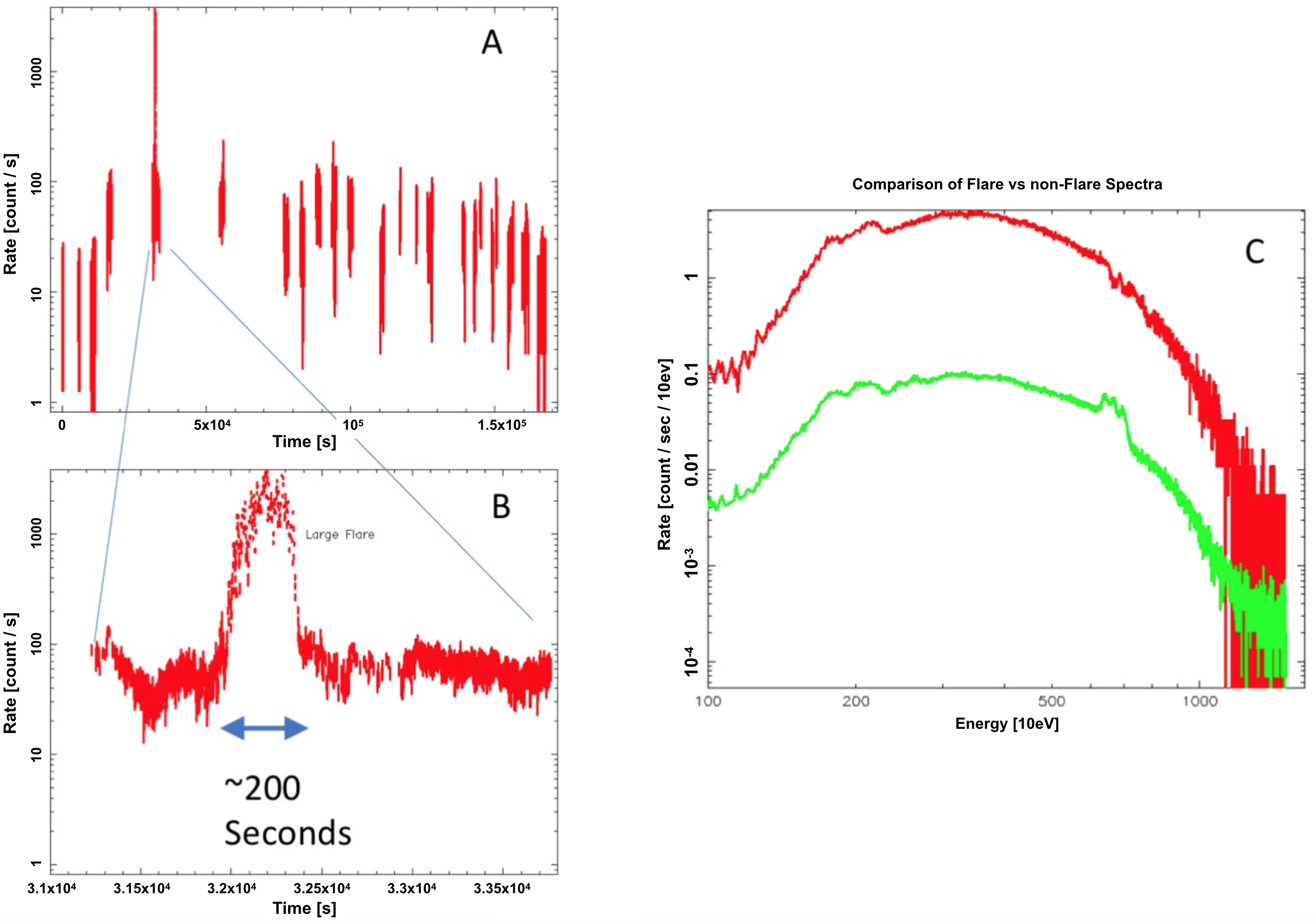NICER / ISS Science Nugget
for November 21, 2019
Recent flaring in GRS 1915+105 shows unusual spectral signature
One of NICER's long-term projects is to monitor the behavior of the
black-hole binary system GRS 1915+105. This past week, based on a clue
of possible brightening seen by JAXA's ISS payload MAXI, NICER stepped
up the cadence of its observations. NICER found (see figure) the source
flux to be approximately 3-5 times higher than has been seen in recent
months.
However, during the evening of November 20th, 2019, NICER
detected a large flare, more than 100 times brighter than the quiescent
flux just last week and the brightest seen from GRS 1915 in several
months. Similar to a flare that occurred earlier this fall, the
spectrum of this week's flare is completely different from the non-flare
emission.
We are looking at these data to better understand the
physical conditions of this system and how these spectra can be so
different.

Figure:
The light curve of GRS 1915+105 measured by NICER over the
past few days is shown in panel A. Panel B zooms in on the period of a bright
flare with a duration of about 200 seconds. The green curve in panel C
shows the NICER X-ray spectrum of the portion of time that GRS 1915 was
not flaring, while the red curve shows the flare spectrum. Curiously,
emission-line features seen in the dimmer period appear to be replaced
by absorption-like features in the flare spectrum.
<< Previous
Main Index
Next >>